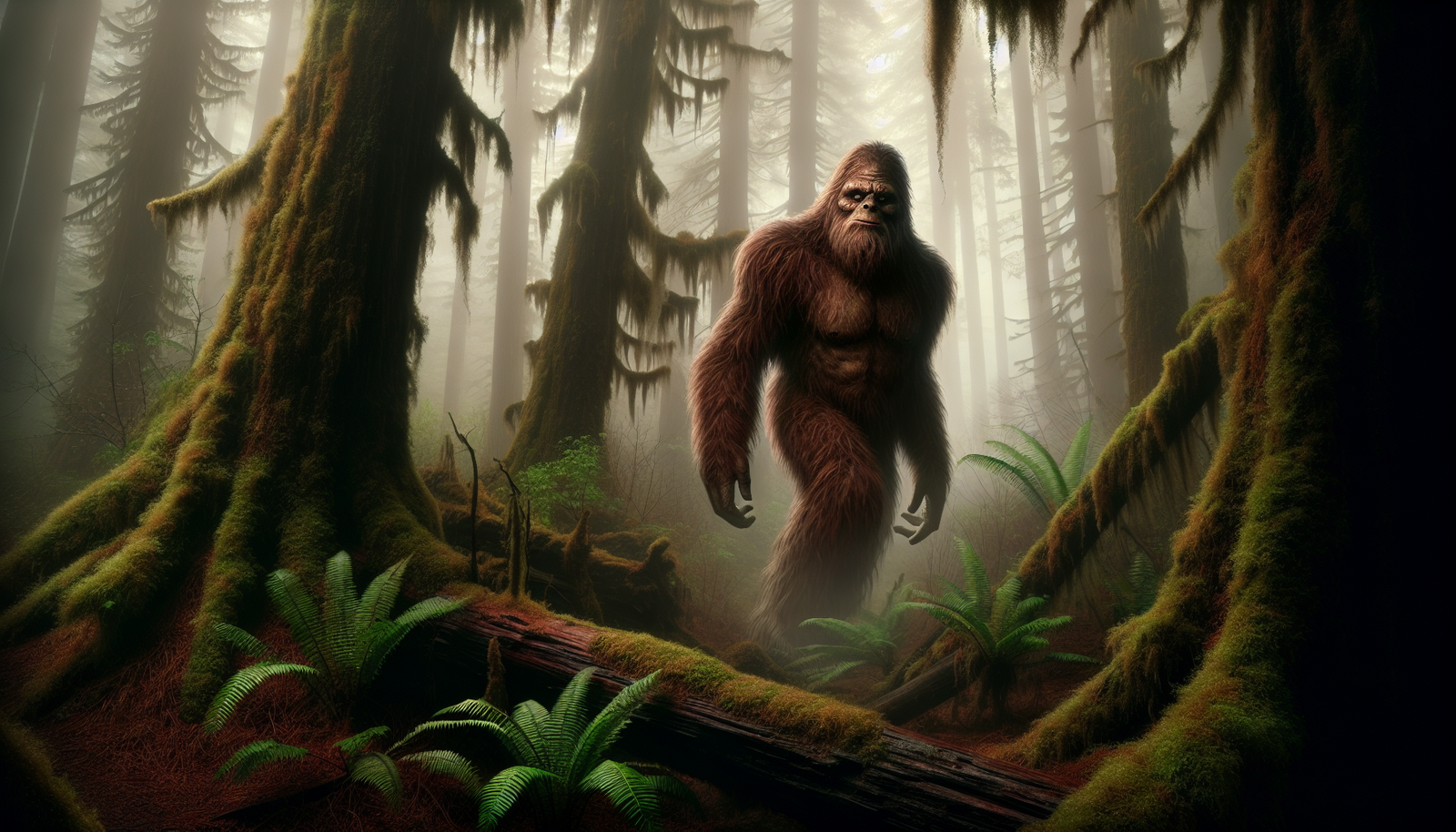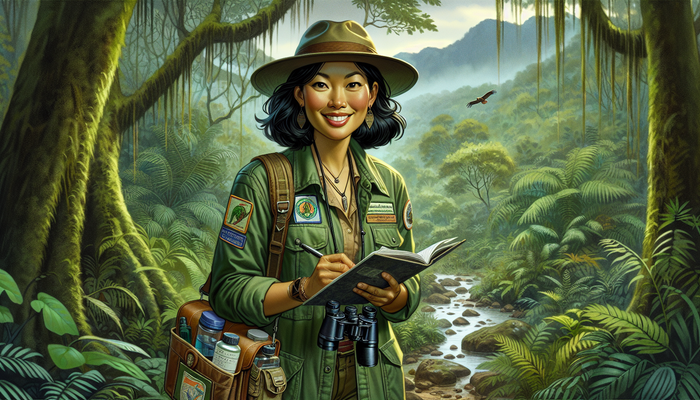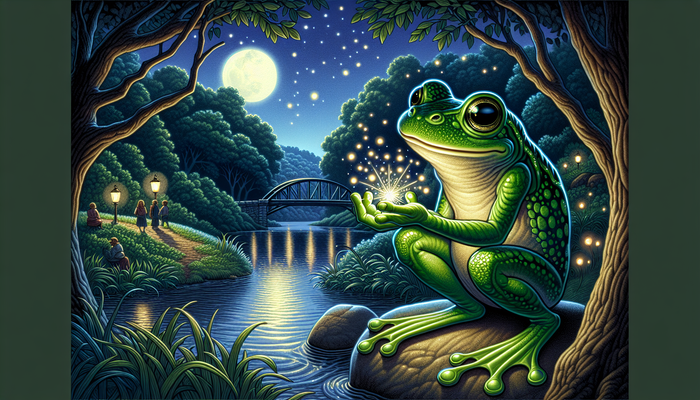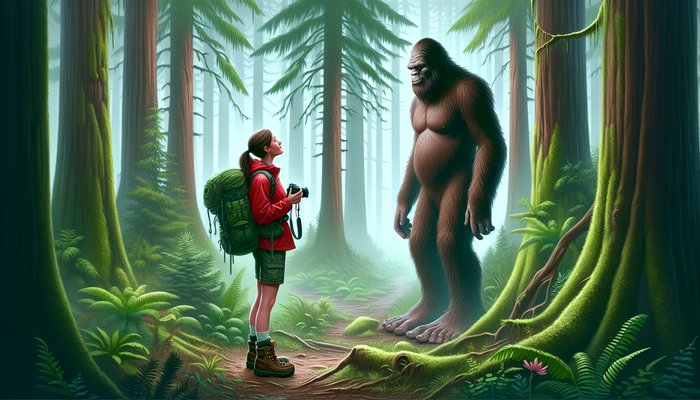Washington's Epicenter of Sasquatch Sightings

By Ava Martinez, Cryptozoologist
Picture this: you're hiking through the lush, dense forests of Washington state, the silence broken only by the occasional chirping of birds and the crunch of leaves beneath your feet. Suddenly, you hear a rustling in the bushes, and your heart skips a beat. Could it be a deer, a bear, or perhaps something more mysterious? As you peer into the foliage, you catch a glimpse of a massive, hairy figure, standing upright and watching you with intense, intelligent eyes. You've just had an encounter with the legendary Bigfoot, the elusive creature that has captivated the imaginations of people around the world for generations.
As a cryptozoologist and biology teacher, I've long been fascinated by the Bigfoot phenomenon, particularly its deep roots in the state of Washington. With over 700 documented sightings, Washington stands as the undisputed epicenter of Sasquatch activity, boasting a rich history, compelling evidence, and an enduring cultural fascination with this enigmatic being. Join me as we delve into the world of Bigfoot in the Evergreen State, exploring the origins of the legend, the pivotal moments that thrust it into the spotlight, and the ongoing search for definitive proof of its existence.
The Origins of Sasquatch in Washington
To truly understand the Bigfoot phenomenon in Washington, we must first look to the indigenous peoples who have called this land home for millennia. The Salish, Yakama, Lummi, and other tribes have long-standing oral traditions that speak of Sasquatch-like creatures roaming the forests and mountains of the Pacific Northwest. These beings, known by various names such as Sasquatch, Skookum, and Seeahtik, are often described as powerful, elusive, and intimately connected to the natural world.
One of the earliest written accounts of these creatures comes from the journal of Paul Kane, an artist who traveled through the region in 1847. While sketching near Mount St. Helens, Kane documented Native American stories of a fearsome "Skookum" that inhabited the area, a being they both revered and feared. This early record hints at the deep-rooted presence of Bigfoot in the collective consciousness of Washington's indigenous communities.
As European settlers began to make their way west in the 19th century, they too started to report sightings of strange, ape-like creatures in the wilderness. Loggers, hunters, and outdoor enthusiasts would occasionally come back from the Cascade Mountains or the Olympic Peninsula with tales of encounters with these elusive beasts. While sporadic and often met with skepticism, these early 20th-century accounts laid the groundwork for Bigfoot's emergence as a cultural phenomenon.
The Patterson-Gimlin Film and the Rise of Bigfoot Mania
The year 1967 marked a turning point in the history of Bigfoot, thanks to a remarkable piece of footage captured by Roger Patterson and Bob Gimlin near Bluff Creek, California, just south of the Oregon border. The Patterson-Gimlin film, as it came to be known, purportedly shows a female Sasquatch striding through a clearing, her powerful, humanoid form covered in dark, shaggy hair. The film, while controversial and heavily scrutinized, remains the most famous and compelling piece of evidence in the Bigfoot canon.
The impact of the Patterson-Gimlin film on the public's perception of Bigfoot cannot be overstated. In the wake of its release, reports of sightings in Washington and throughout the Pacific Northwest skyrocketed. Eyewitnesses came forward with their own encounters, describing massive, bipedal creatures that left behind footprints, strange vocalizations, and an aura of mystery. As the evidence accumulated, so too did the realization that Washington was ground zero for Bigfoot activity.
According to the Bigfoot Field Researchers Organization (BFRO), a leading authority on Sasquatch investigations, Washington boasts an astonishing 700+ documented encounters, more than any other state in the nation. This wealth of sightings, coupled with the region's vast, untamed wilderness, has firmly established Washington as the Bigfoot capital of the world.
Factors Contributing to Washington's Bigfoot Prominence
So, what is it about Washington that makes it such a hotbed for Sasquatch activity? The answer lies in a combination of factors that create the perfect habitat for an elusive, intelligent primate.
First and foremost, Washington is blessed with an abundance of rugged, densely forested wilderness. From the misty peaks of the Cascade Mountains to the temperate rainforests of the Olympic Peninsula, the state boasts vast tracts of land that are largely untouched by human development. These remote areas provide ample space for a creature like Bigfoot to roam, hunt, and hide, far from the prying eyes of civilization.
Moreover, Washington's diverse ecosystems support a rich array of wildlife, including bears, elk, and deer, which could potentially serve as prey for a large, omnivorous primate. The state's varied landscapes, from coastal estuaries to subalpine meadows, offer a veritable buffet of food sources that could sustain a Bigfoot population.
Another factor contributing to Washington's Bigfoot prominence is the relatively high level of human activity in its wilderness areas. With an extensive network of hiking trails, logging roads, and recreational infrastructure, the state's forests and mountains are more accessible than many other remote regions of the country. This increased human presence raises the likelihood of encounters and sightings, as evidenced by the numerous reports from outdoor enthusiasts over the years.
Finally, Washington's cultural embrace of the Bigfoot legend cannot be overlooked. Many towns, businesses, and even government agencies have incorporated Sasquatch into their local identities and tourism initiatives. This widespread acceptance and celebration of Bigfoot lore may encourage more people to come forward with their sightings and experiences, further cementing Washington's status as a Sasquatch hotspot.
Washington's Bigfoot Hotspots and Infamous Sightings
Within Washington's borders, certain locations have gained notoriety for their high concentration of Bigfoot activity. These hotspots, each with its own unique history and landscape, have been the site of some of the most compelling and infamous Sasquatch encounters on record.
One such location is the area surrounding Mount St. Helens, particularly the Ape Canyon region. In 1924, a group of miners claimed to have been attacked by a band of "hairy apes" while working in the canyon. The incident, which came to be known as the "Battle of Ape Canyon," involved the creatures allegedly hurling rocks at the miners' cabin and attempting to break in. While some dismiss the story as a tall tale, it remains one of the earliest and most dramatic accounts of a Bigfoot encounter in Washington.
Another hotbed of Sasquatch activity is the Olympic Peninsula, a rugged, heavily forested region that stretches along the state's western coast. The dense, moss-draped forests and deep river valleys of the Olympic National Park and its surroundings have been the site of numerous Bigfoot sightings and investigations over the years. Many researchers believe that the peninsula's remote, largely inaccessible wilderness provides the perfect sanctuary for a population of these elusive creatures.
The Cascade Mountains, which run like a spine down the center of the state, have also long been considered a Bigfoot stronghold. From the North Cascades to the slopes of Mount Rainier, this vast, mountainous region has yielded countless reports of strange, humanoid creatures lurking in the forests. One particularly notable hotspot is the Yakima Indian Reservation, located in the foothills of the Cascades. For generations, members of the Yakama tribe have reported encounters with Bigfoot-like beings on their ancestral lands, lending credence to the idea that these creatures have deep roots in the area's history and ecology.
Perhaps one of the most intriguing Bigfoot discoveries in recent years occurred in the Skookum Meadows, a remote area near Mount St. Helens. In 2000, a team of researchers and wildlife biologists discovered what they believe to be a Sasquatch "nest" - a large, circular impression in the mud, surrounded by hair samples and other physical evidence. While the find remains controversial, it has been hailed by some as one of the most significant Bigfoot-related discoveries in Washington's history.
Bigfoot as a Cultural Icon in Washington
Beyond the sightings and physical evidence, Bigfoot has become deeply ingrained in the cultural fabric of Washington state. Nowhere is this more apparent than in Skamania County, located in the heart of the Cascade Mountains. In 1969, the county commissioners passed an ordinance making it illegal to kill a Bigfoot, punishable by up to a year in jail and a $1,000 fine. While the law was later amended to reduce the penalties, it solidified Skamania's reputation as a Sasquatch refuge and helped to establish the creature as a protected and revered figure in the region.
Other Washington communities have also embraced Bigfoot as a local icon and tourist attraction. The town of North Bonneville, for example, boasts a "Bigfoot Discovery Trail" featuring a series of wooden statues and sculptures depicting the creature in various poses. Stevenson, another Cascade Mountain town, is home to several Bigfoot-themed businesses, including a coffee shop and a gift store. The Skamania County Pioneer, the local newspaper, has also extensively covered Bigfoot sightings and research over the years, further cementing the creature's place in the region's lore.
Even at the state level, there have been efforts to recognize Bigfoot's cultural significance. In 2017, a bill was introduced in the Washington State Legislature to designate Sasquatch as the official state cryptid. While the measure ultimately did not pass, it demonstrated the enduring fascination and affection that Washingtonians have for their elusive, hairy neighbor.
Bigfoot has also left an indelible mark on Washington's popular culture. The state has served as the setting for numerous films, books, and television shows that feature the creature, including the beloved 1987 comedy "Harry and the Hendersons" and the Animal Planet series "Finding Bigfoot." These depictions, while often lighthearted and fictionalized, have helped to keep the Bigfoot legend alive and well in the public imagination.
Ongoing Research and Expeditions in Washington
Despite the wealth of sightings and cultural significance, the scientific community remains largely skeptical about the existence of Bigfoot. However, this hasn't deterred a dedicated group of researchers, enthusiasts, and citizen scientists from continuing the search for definitive proof.
One of the most prominent Bigfoot research organizations operating in Washington is the Olympic Project, a team of investigators who have been studying the phenomenon in the Olympic Peninsula region for over a decade. Using a combination of scientific methods, including camera traps, audio analysis, and physical evidence collection, the Olympic Project aims to gather irrefutable evidence of Sasquatch's existence.
Another leading group in the field is the Bigfoot Field Researchers Organization (BFRO), which has conducted numerous expeditions and investigations throughout Washington state. The BFRO's extensive database of sightings and reports has been instrumental in identifying hotspots and patterns of Bigfoot activity, helping to guide future research efforts.
In recent years, the controversial Sasquatch Genome Project has also made headlines with its claims of having collected and analyzed DNA evidence from alleged Bigfoot samples, including some from Washington state. While the project's findings have been met with skepticism from the scientific community, they have nonetheless fueled ongoing debates about the feasibility of proving Bigfoot's existence through genetic testing.
Beyond these organized efforts, countless individual researchers, hobbyists, and curiosity-seekers continue to contribute to the growing body of Bigfoot evidence and lore in Washington. From amateur investigators setting up trail cameras in remote forests to hikers reporting strange encounters on social media, the search for Sasquatch has become a collaborative, crowdsourced endeavor that spans the state and beyond.
From Bigfoot to UFOs: Hangar 1 Publishing Has You Covered!
Explore Untold Stories: Venture into the world of UFOs, cryptids, Bigfoot, and beyond. Every story is a journey into the extraordinary.
Immersive Book Technology: Experience real videos, sights, and sounds within our books. Its not just reading; its an adventure.



























